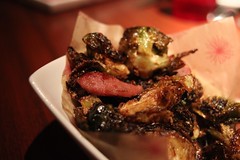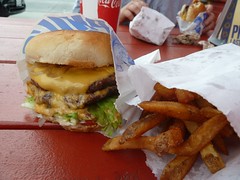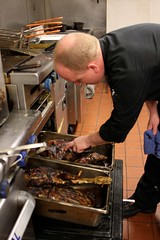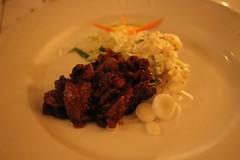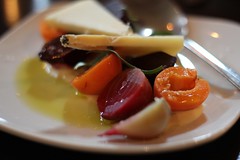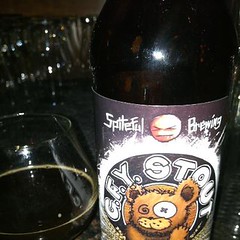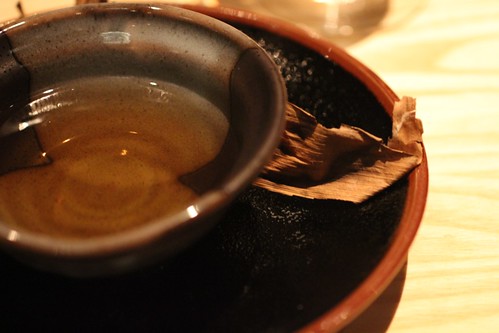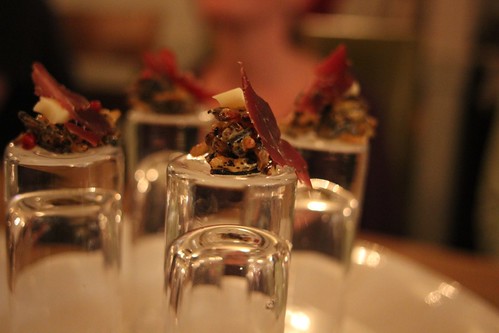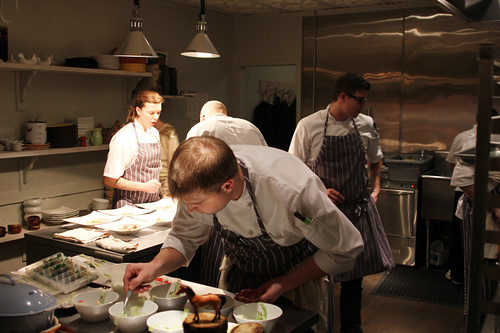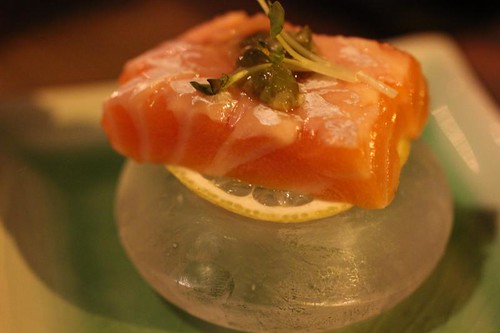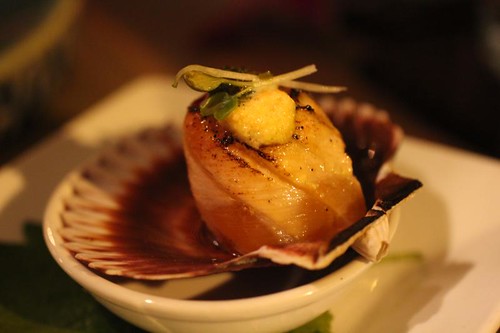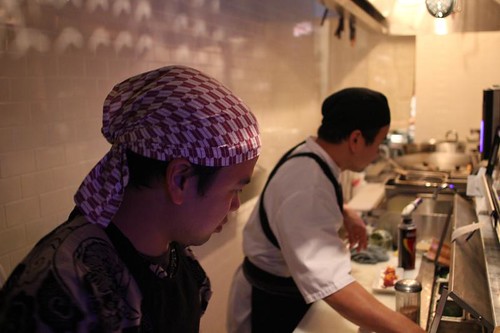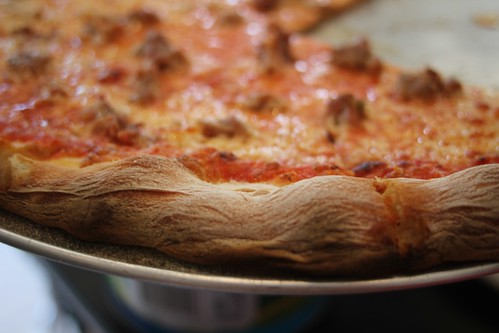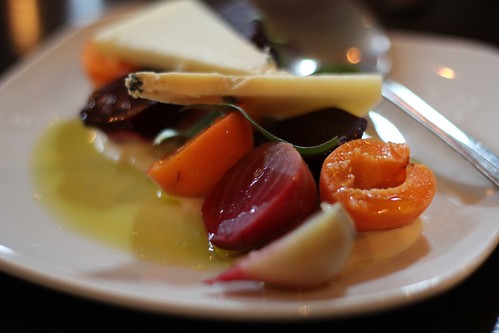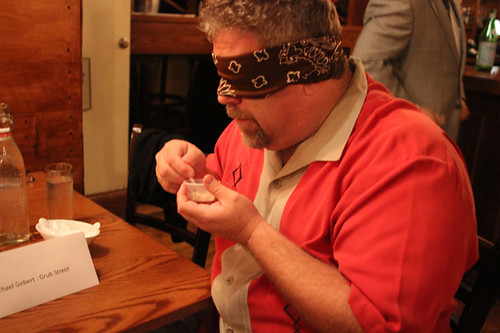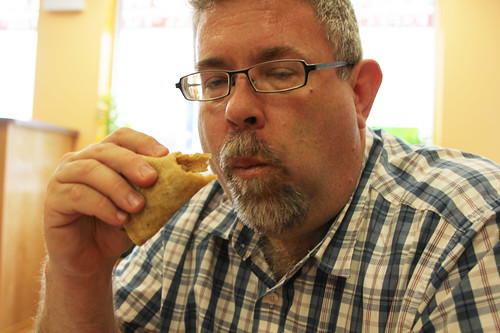
No one makes fun of New Orleans. It’s fun city, Vegas crossed with spring break crossed with Paris crossed with Haiti and Deliverance. It’s been through so much— what heartless bastard could make fun of the city that suffered Katrina? Only the heartlessiest of heartless grinchtards. It’s an America that’s all play and no work, what’s not to love.
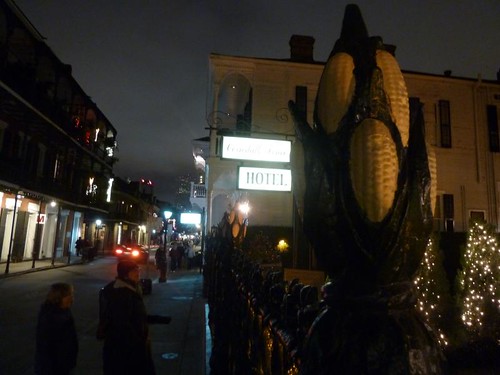
Hey, I had a good time. I loved getting up early and non-hungover and walking the French Quarter in the morning, as the only person awake who wasn’t an employee cleaning up after the revelry of the night before. And anything I ate for around ten bucks was great. Like the shrimp po’ boy at Domilise’s. Or the andouille po’ boy at B&C Seafood Market in Plantation country. Or the muffaletta at Central Grocery. Or the muffaletta at Cochon Butcher.
But as that list suggests, the list of great New Orleans foods is not that long. It’s a cool cuisine, but not a bottomless one by any means. And some of its iconic dishes… I like jambalaya, I’ve made jambalaya with mail-order crawfish, everyone likes jambalaya. But is jambalaya a profound dish, a dish a great chef can make something magical out of? No, it’s a comfy dish anyone can make decently, it’s the South’s answer to steam table lasagna.

And more to the point, while I liked everything I had for $10 and outright loved some of it, it’s a much harder place to have a really good meal for $50 per person in. And that matters because all those great little shack places seem to close at 3 in the afternoon, so if you’re staying in the French Quarter— and everyone stays in the French Quarter— you’re going to have to eat dinner there. And even if you find places that aren’t totally tired and jaded of tourists by now, the easy pickings of tourists have an effect and they’re going to be a bit slack. (I had more service gaffes— wrong thing brought, dish forgot, poached eggs as hard as racquetballs— in five days there than in five months in Chicago.) There are other parts of town, like around Tulane, that look like Austin, full of fun-looking, youthful new places, and there could be some really good places up there. But you’re going to have to make the decision to travel for 20 minutes to go have pizza to get to them, so most people mostly don’t, I expect.
And why would you, when all the word on the city is happy to tell you that the places that were great 20 years ago— or 100 years ago— are still just fine? That’s my problem with the big, easy indulgence of mediocrity anywhere— you’re not just giving a pass to places past their prime, you’re making it harder for new places that try harder to be noticed. Chicago doesn’t have the toughest critical scene by any means, but on the whole, there’s Darwinian pressure that keeps the scene pretty sharp and encourages the tired to retire. So let’s be a little tough on NOLA for once, for its own good.
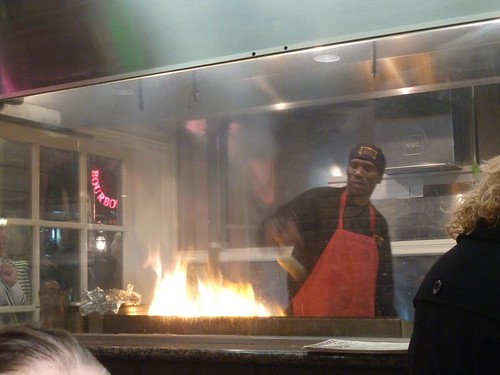
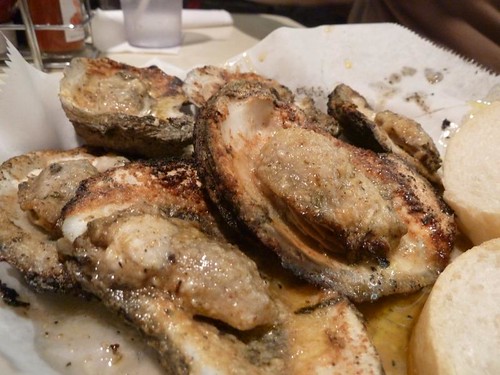
It started well, at least— the first night we went around the corner from our hotel, saw the hour-plus line at the very popular Acme Oyster Bar, and then took the Rough Guide’s advice and got in the much shorter line across the street at Felix’s Oyster Bar, and you’ll never convince me I was worse off for it. Felix’s packed, no-frills, diner-grill-bar atmosphere was a great introduction, their hand with fried stuff was first-rate and instantly converted my 11-year-old to what he would eat all week, fried catfish, and the grilled oysters— prepared over a fiery Balrog of a grill right in the room, filling it with enough smoke to make you start calculating life expectancy for the staff— were fantastic, black-singed bivalves snatched straight from Lucifer’s nether regions, even winning my oysterphobic wife over with their charred black Magick.
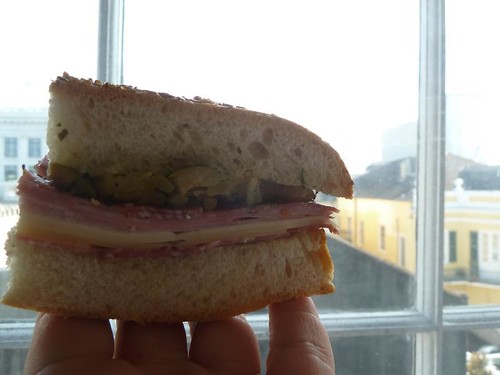
The next day started well, too, with the two most touristy things we could think of to do— beignets at Cafe du Monde and muffaletta from Central Grocery. As for the former, fried dough with sugar, what’s not to like, and for the latter, though I know it’s widely considered to have gone downhill, really, it’s a sandwich with cold cuts on it, how much can it change? I think people now compare it to ones like Cochon’s, which tastes of each individual artisanal meat, where Central Grocery’s taste like all those things together on bread, which is one definition of a sandwich. One’s good old school, one’s good in new artisanal ways. I appreciate ’em both.

A kind of country prosciutto was perhaps the best meat of our meal at Cochon.
That night was New Year’s Eve, and I made reservations for us for a five-course meal at Cochon, to see a somewhat higher end take on New Orleans food (though Herbsaint is Donald Link’s genuine upscale restaurant; Cochon has more like the atmosphere of a nice barbecue place). For Chicagoans, Cochon is a grass-is-greener place, we imagine brash country Cajun miracles beyond our abilities, so let me just say, while it’s good and makes some beautiful meats, I also think that it doesn’t measure up to our best pork palaces in other areas— at The Purple Pig or Nightwood or wherever, we’d have been served better, more balanced and thought-out vegetable courses than a winter cabbage slaw too bitter to enjoy, to name one. That’s not to knock Cochon so much as to say, just being out of town doesn’t automatically make something better than what we have here.

Another great ham course, though sadly, far too huge for us to consume (and, being in a hotel, we couldn’t take it back).
Passing over a purely functional meal at the WWII museum, that night we went looking for another Felix’s Oyster Bar… and would basically never find anything that good in the French Quarter again. A Creole meal at a family restaurant called Olivier’s was friendly enough, but this third generation restaurant feels played out, save for a single bowl of gumbo in which the third generation chef-owner seems to have applied all the modern tricks he knows to make it sharp and multidimensional as a dish again. Get cracking on the rest of the old classics on the menu, kid, is all I can say.
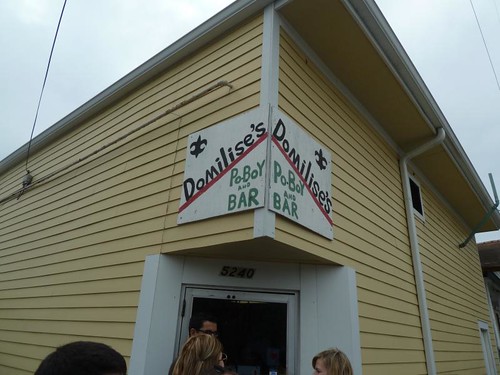
Would Domilise’s, a famous, Road Food-approved po’ boy joint in the uptown area, prove to be a transcendent joint or another past-its-prime place living in its own past? The TV-spawned lines could be read either way; the rueful attitude of one of the owners, asked how he was holding up after being on this or that show and the new crowds he fed each day, might have been a bad sign… but for all that getting into Domilise’s rivaled a TSA line, in the end, this place was the real thing and worth the wait. A million little perfectly fried shrimp on an angelically-fluffy roll… magic.
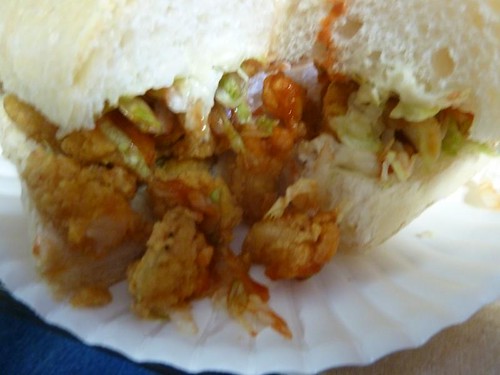
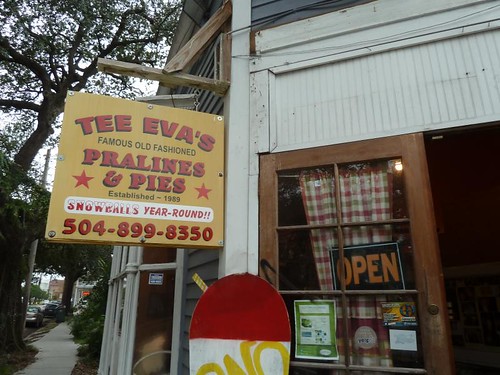
We popped in here after Domilise’s while just walking around. Very good, nice owner, this is the kind of exploring I’d have loved to have done more of.
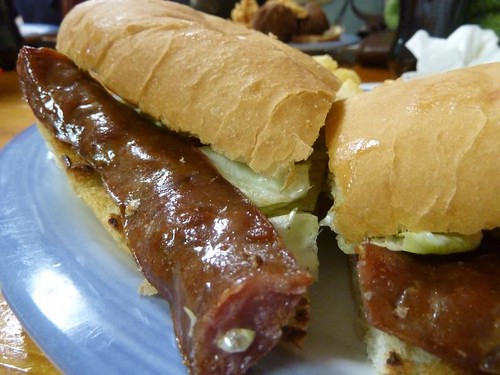
Po’boy was on the menu again the next day, at a place called B&C Seafood out by some of the old plantations which you can tour west of the city (which, I have to say, I’m very glad I visited right before seeing Django Unchained, because it made it all more real). This time I had a spicy andouille. Greatest sausage I ever ate, no, but good, yes. $10 well spent.
But that night, seeking to break out of the French Quarter, we made reservations at a place called Brigtsen’s, which was highly regarded and had won Best Chef South or something at the James Beard awards circa 1996, supposedly a contemporary take on Cajun/Creole food. And… it was very faithful to 1996. It wasn’t bad, but it was basically a nice supper club, things like crab-stuffed fish that you see at steakhouses here, very little about it suggested that we were in New Orleans and not, say, Minneapolis or Denver; the ladies who served us could not have been sweeter, I feel bad knocking it, but basically it was food that seemed aimed at parents taking their Tulane-attending kids out for a nice dinner, nothing on the menu that would rock the boat, or my world. By this point I was just resigned to regretting what I could have spent the same $200 on in Chicago.
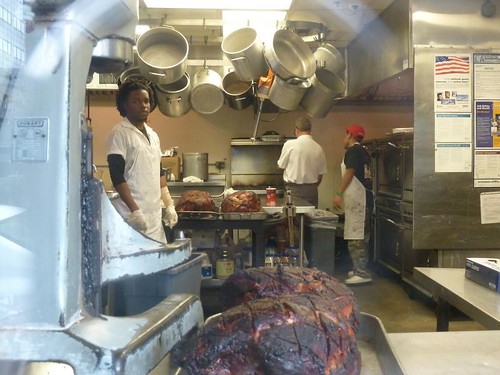
Our last day I was determined to eat cheap and well— since dinner would be provided by Amtrak, that left only breakfast and lunch, I was sure it could be done. Breakfast was at Mother’s, a ham restaurant, serving gorgeous glazed-to-a-crisp ham (you can, in fact, order the outer crust, which is called “black ham”), along with pretty great biscuits and grits (so far as I’ve ever been able to tell, there are no grades of grits, better grits or worse; grits is grits). The service from the cashier with the thousand-yard stare who promptly put milk in my black coffee was, by now, no more than I expected, though a kindly older black woman came by later and exchanged Southern pleasantries with my son and myself. But hey, I’d have ordered this ham and biscuit from Hurricane Katrina herself.
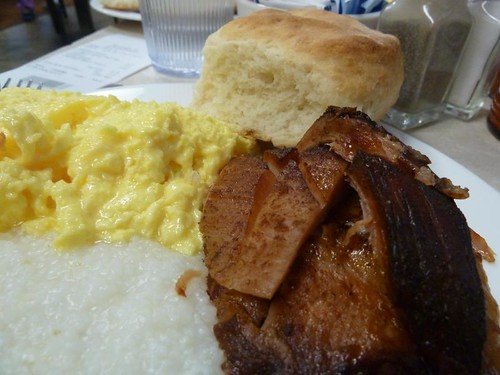
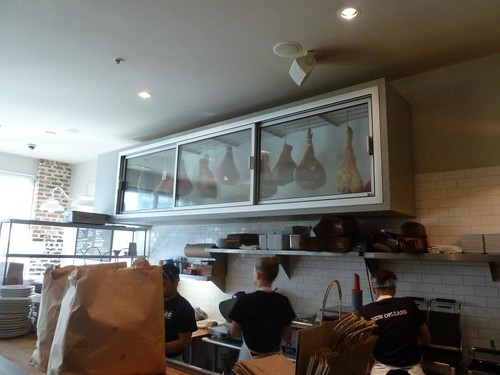
Our final meal was purchased in advance for the train ride home: sandwiches from Cochon Butcher. The muffaletta, indeed, showed artisanal finesse far beyond the blue collar simplicity of the Central Grocery one, though it was for me the least of the three sandwiches— better yet was a pork belly sandwich with cucumber and mint, and best of all something called the “Buckboard Bacon Melt,” with collard greens. They were even better than our $75 dinner at Cochon a few nights before. And the price? $12, $10 and $11 respectively.
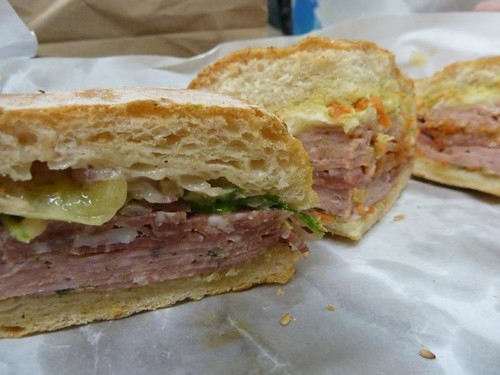

Heading home.


 Posted in
Posted in 

